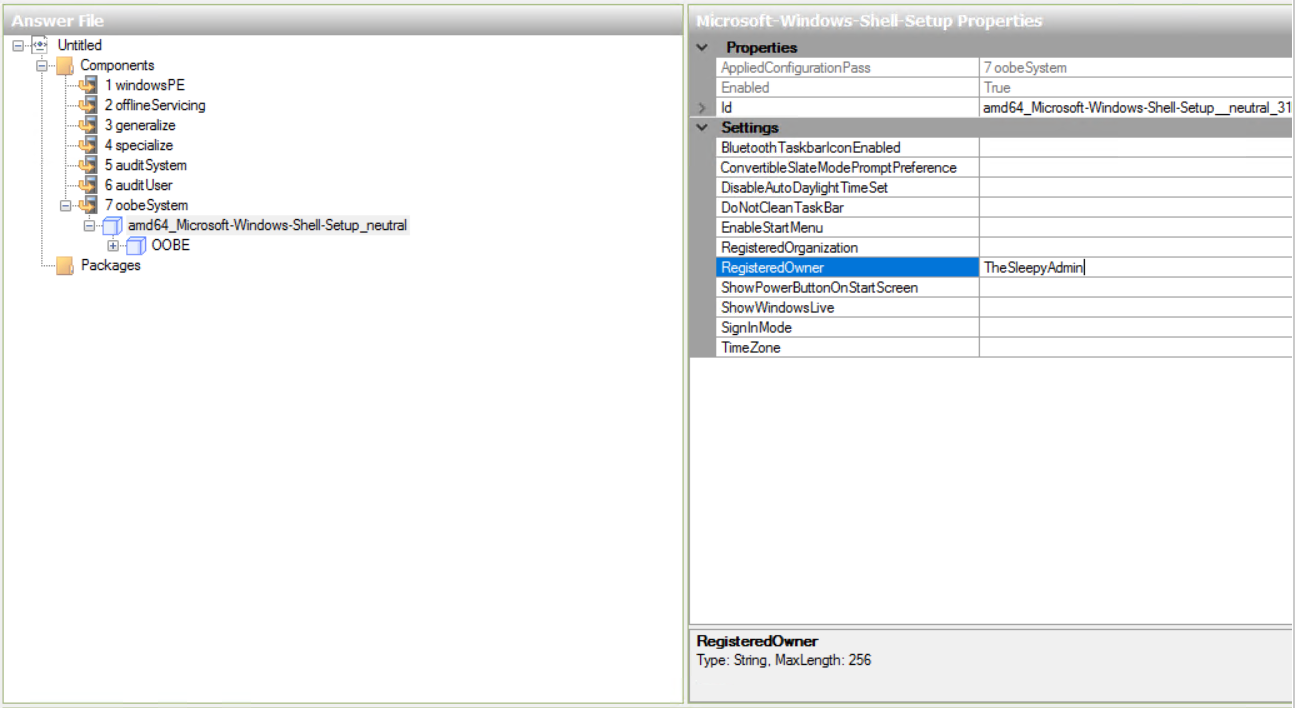Windows Answer File Generator Windows 10
What is Windows Answer File Generator? Windows Answer File Generator (WAFG) is a simple website that provides similar functions to Windows System Image Manager (SIM). Windows System Image Manager is the tool used to create an unattended Windows Setup answer file. Next Windows Setup sits on the 'Where do you want to install Windows?' Screen instead of creating the partitions from the unattend file which I can see at the following location X: sources wdsunattend wdsunattend.xml. I can't seem to get WDS to process the file even though it clearly downloads it from WDS. Any help is appreciated. Step 6: Mount an image and add the answer file. Use DISM to mount a Windows image. To learn how to mount an image, see Mount and modify a Windows image using DISM. Copy the answer file into the image into the Windows Panther folder, and name it unattend.xml. The Panther folder is one of the folders where Windows searches for an answer file. /fs-15-game-free-download-for-android.html. This topic shows the historic list of changes to answer file settings for each build of Windows 10. Changed answer file settings for Windows 10 for desktop editions, build 1709. Below are the Windows 10, version 1709 answer file settings that have changed since Windows 10 for desktop editions (Home, Pro, Enterprise, and Education), version 1703.
What media are you using to install Windows 10 - Volume Licensing? The link you provided links to KMS client keys, which requires you to have a KMS host server set up - which doesn't sound like your scenario.

You will need to use Volume License media of Windows 10 Pro/Enterprise to create a standard image for deploying Windows. I wrote a how-to on reimaging rights, which is essentially what you are trying to use by creating a standard image for deploying Windows. I also wrote an update article on applying the free Windows 10 upgrade if you are a qualifying VL customer.
So to sum it all up; unless you have a qualifying VL agreement (as noted here) you will have to perform the in-place upgrade to Windows 10 (if the PCs are not already on Windows 10). Once your PCs on Windows 10, you can use your Volume License media/keys to create your standard image for deploying Windows 10. The Windows 10 KMS Client key is baked into the media you download from VLSC. You can move from KMS to MAK if needed.
An answer file is an XML-based file that contains setting definitions and values to use during Windows Setup. In an answer file, you specify various setup options. These options include how to partition disks, where to find the Windows image that will be installed, and which product key to apply. You can also specify values that apply to the Windows installation, such as names of user accounts and display settings. The answer file for Setup is typically called Unattend.xml.
Answer files that are created in Windows System Image Manager (Windows SIM) are associated with a particular Windows image. You can therefore validate the settings in the answer file to the settings in the Windows image. However, because any answer file can be used to install any Windows image, if there are settings in the answer file for components that are not in the Windows image, those settings are ignored. For information about how to create answer files, see Best Practices for Authoring Answer Files.
Sections of an Answer File
Settings in an answer file are organized into two sections, components and packages.
Components
The components section of an answer file contains all the component settings that are applied during Windows Setup. Components are organized into various configuration passes: windowsPE, offlineServicing, generalize, specialize, auditSystem, auditUser, and oobeSystem. Each configuration pass represents a different phase of Windows Setup. Settings can be applied during one or more passes. If a setting can be applied in more than one configuration pass, you can select the pass in which to apply the setting.

For more information about the different components and settings that you can configure in an answer file, see the Unattended Windows Setup Reference (unattend.chm).
Packages
Microsoft uses packages to distribute software updates, service packs, and language packs. Packages can also contain Windows features.
You can configure packages to be added to a Windows image or removed from a Windows image. You can also change the settings for features in a package.
The Windows Foundation Package, included in all Windows client and server images, includes Windows features. For example, Windows Media Player, Games, and Backup are all Windows features in the Windows Foundation Package.
Features are either enabled or disabled in Windows. If a Windows feature is enabled, the resources, executable files, and settings for that feature are available to users on the system. If a Windows feature is disabled, the package resources are not available, but the resources are not removed from the system.
Some Windows features may require that you install other features before you can enable the installed version of Windows. You must validate your answer file and add any required packages.
Windows Answer File Generator Windows 10
For example, you can disable the Windows Media Player feature to prevent end users from running Windows Media Player. However, because the package is disabled, those resources are not removed from the Windows image.
Windows Answer File Generator Windows 10 Download
Packages in an answer file are applied to the Windows image during the offlineServicing configuration pass. You can also use Deployment Image Servicing and Management (DISM) to add packages to an offline Windows image.